College of Science, Engineering & Technology
Photonic professor heads prolific awards
Prof Lukas Snyman from Unisa’s Nanotechnology and Water Sustainability (NanoWS) research unit and the Department of Electrical Engineering in the College of Science, Engineering and Technology (CSET) was the joint recipient, with Prof Marcia Mkansi, of the Vice-Principal: Research, Postgraduate Studies, Innovation and Commercialisation Award: Most prolific innovator over the past five years at the 2020 Research & Innovation Awards. Snyman received the award for disclosures made and granted to Unisa, as well as international patent applications filed by him and his students over the last five years. He also received another innovation award for the First patent granted in South Africa: A power system.
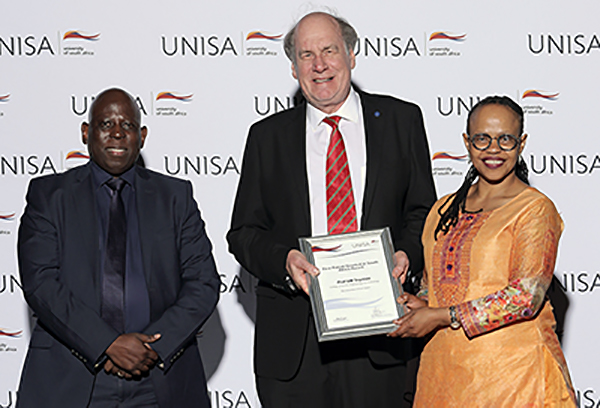
Ayanda Noma (Director: Innovation and Technology Transfer) and Prof Thenjiwe Meyiwa (Vice-Principal: Research, Postgraduate Studies, Innovation and Commercialisation) congratulate Prof Lukas Snyman (College of Science, Engineering and Technology) (centre) on his Vice-Principal: Research, Postgraduate Studies, Innovation and Commercialisation Award: Most prolific innovator over the past five years and First patent granted in South Africa Award: A power system.
The patents are in the areas of photonics, optoelectronics and renewable energies. In particular, he has recently filed three patents on the concept of collecting thermal energy from the sun, storing it in water in standard household geysers, and converting a portion of this energy to electricity. Recent research indicates that conversion efficiencies to electricity of up to 60% can be obtained by adding specific electronics technology to thermal-electric cells. This concept is unique in South Africa and can generate a new paradigm of supplying electricity to households in the country.
Other inventions
Snyman and his students have also worked on a new generation of photonic sensors that can be integrated on microchips and uniquely sense a number of environmental parameters and bio-materials, including viruses in the atmosphere. One local and three international patents have been filed on this technology.
The team has also worked on a new type of low-cost wind turbine that has specially designed blades that operate under low wind-speed conditions and extract a maximum amount of energy from slow moving air - one patent is currently processed on this technology.
Furthermore, they are also currently involved in generating a new type of water desalination unit using specially constructed membranes that can be used in a household to purify water from any mineral or organic contents. The good news is that most of these technologies will create many new job opportunities in South Africa. Several local patents and international patents have also been filed on this technology.
Snyman has, during 2019, attracted almost R10 000 000 in grants from external sources based on proposals he and his colleagues submitted for funding for these projects. To round it up nicely, they have also published about ten articles in front-end journals and international conference proceedings.
His contribution in Unisa and academia is indisputably unparalleled and consistent. Asked what inspires his prolific ideas, he attributes his inventive flair to the harsh exposure to the environment he experienced as a child on a rural farm in the Eastern Cape. "In very hard periods, we had to devise techniques and technology to keep vehicle and water pumps running in order to supply livestock with water." This inspired him to study Physics, Mathematics, Applied Mathematics and Electronic Engineering at several universities. The studies in turn exposed him to a high level of research projects, design work and realising prototypes. Since then, he has never looked back. "I started to read the market and using my background knowledge designed and realised prototypes that could serve specific purposes in everyday life." In this regard, several products are currently in the process of being marketed and commercialised with licensing agreements with Unisa. "There is nothing more rewarding than to observe that ‘aha’ moment when new theoretical discoveries are made, or when a product or process is made to work for the first time," he reveals.
While Snyman has remains inventive, he regards highly the need to keep abreast of industry developments. For this reason, he continues to attend courses in creativity, innovation, intellectual property protection, SMME creation and commercialisation. He encourages that "if you develop this kind of mind-set, you remain creative, and continuously come up with new and innovative ideas".
A social butterfly
It takes a lot to remain as consistent as Snyman has been. While many of us take it easy over weekends, he often spends his Sundays writing and documenting his research findings. Nerdy you may think; you've got it wrong. Snyman is also a social butterfly with a healthy family life. When he is not inventing patents, he spends his time with his wife Elize, who is a music teacher, his two sons, who are also engineers, and friends over a cold beer or a chilled glass of wine.
In summary
Snyman is currently affiliated to the NanoWS research unit and also serves on an Incubation Steering Committee at CSET at Unisa. He continues to produce research with impact in order to manifest Unisa’s efforts to contribute to the knowledge and information society as well as ensuring the sustainability of the country through research inventions that are taken to the market to generate
economic activity while providing solutions to social problems.
Visual representation of some developments
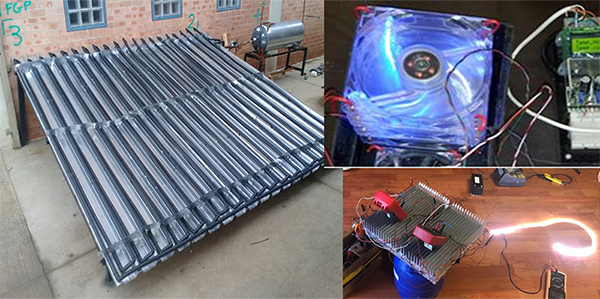
Figure 1: Viewgraphs of technologies currently being developed at NanoWS and the Department of Electrical Engineering at CSET in association with master’s students Fullbright Twite, Fanos Mothizongo and Lee Olivier.
Figure (a) shows a large-area low-cost solar thermal energy absorber. The heat absorbed is used to heat water at about 25 cents per kWhr (current Eskom Grid price about R2/kWhr). Simultaneously a portion of the heat energy stored in the geyser is converted to electricity that can be used to run household appliances such as lighting, information and communication equipment, and even microwave ovens.
Figure (b) shows an electronic converter that has been developed to convert the thermal energy to electricity. A string of household LED lights is shown lit up.
Figure (c) A special electronic control unit is shown that has been develop to facilitate the conversion process.
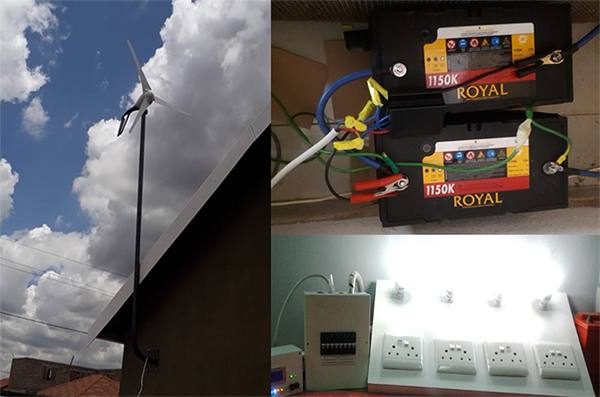
Figure 2: Recently constructed wind turbine as developed by MTech student Tshepo Sithole in Soweto. There are strong evening and night drafts in the area, giving enough energy to supply a complete small household of electricity for one day. The energy collected is stored in two big storage batteries and used during daytime to run household appliances. The cost outlay of the system is about R8 000. Payback tariffs can be arranged over a specific time after which energy collection is free. The lifetime of the system is about twenty years, with minimum maintenance. Some components are imported from China.
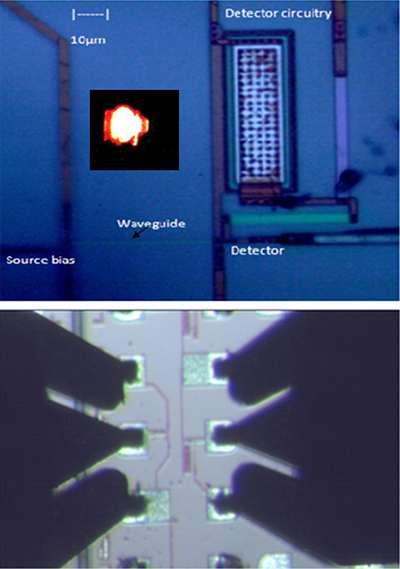
Figure 3: Recently realised microsensors on microchip by Timothy Okhai, PhD student at NanoWS and CSET’s Department of Electrical Engineering. The device consists of a small unique light source fabricated on chip. The light is then guided through a "microwave guide" on the chip. It then interacts with an environmental or bio-species as adsorbed on the chip using special technology. A range of sensors detect the reflected light from the absorbed species, and a microprocessor then interprets the information and broadcasts and displays information about the environmental parameter on a smart phone. The whole device is fabricated on chip with about a millimetre-square area.
Anybody interested in setting up a business or commercialisation partnership with Unisa is welcome. Contact the Unisa Innovation and Technology Transfer Directorate (DITT) at nomaav@unisa.ac.za.
* By Tshimangadzo Mphaphuli, Senior Journalist, Department of Institutional Advancement
Additional reading:
He's the [ideas] man
Patent power! Unisa is serious about solar energy
Unisa scientist obtains R8-million Rand Water Chair
Publish date: 2020-04-07 00:00:00.0

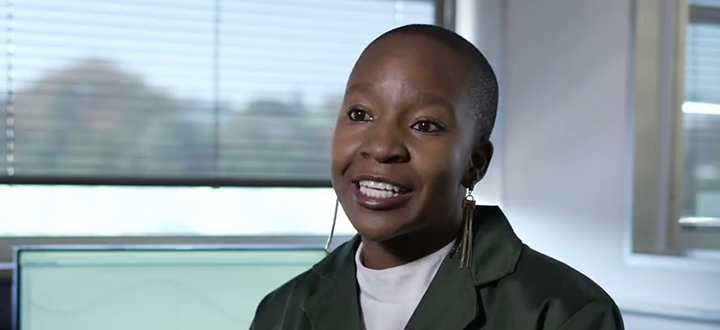 Young Unisa doctoral graduate joins elite Lindau Nobel Laureate group
Young Unisa doctoral graduate joins elite Lindau Nobel Laureate group
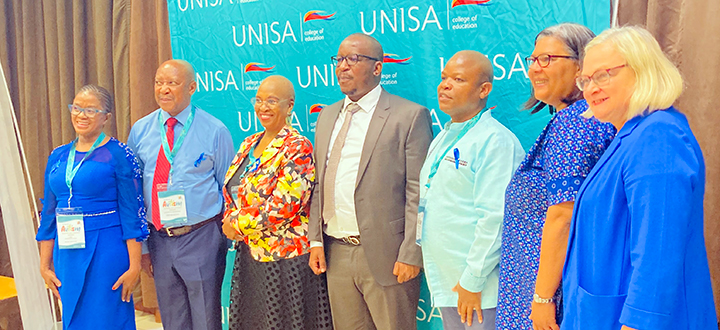 Education MEC addresses Unisa autism seminar
Education MEC addresses Unisa autism seminar
 Seven Unisans nominated for the NSTF-South32 Awards 2023/2024
Seven Unisans nominated for the NSTF-South32 Awards 2023/2024
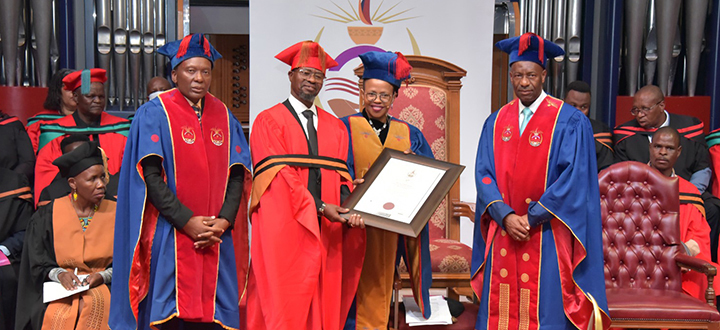 Unisa awards posthumous honorary doctorate to literary maven, OK Matsepe
Unisa awards posthumous honorary doctorate to literary maven, OK Matsepe
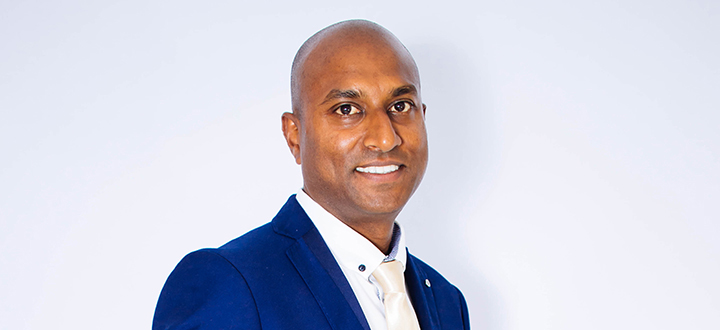 From humble beginnings to academic leadership
From humble beginnings to academic leadership